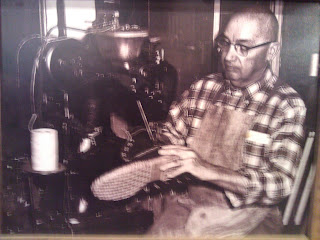Observations and Reactions:
I
had visited the Portland Museum of Art about a dozen times. Most of the visits
were school fieldtrips. One visit was for an Art History class (Professor
Virginia Goodlett: super awesome teacher). I’m not an art type of guy but I’ve
always enjoyed visiting the museum. Cubism and landscape art are my two
favorite types of art and the museum has plenty of that, even a Picasso. In my
visit for Art History I had to write a formal analysis paper. From this paper I
came to an understanding that History and Art History are not the same thing.
The grade I got on the paper proves it. Other than an average grade on my paper
I also received an understanding of what art and Art History are. They are
definitely not spatters of paint that seven year-olds can do.
At
the visit to the museum for our History of Maine class I focused on the art of
Maine. Obviously, I enjoyed the section dedicated to Winslow Homer and his
painting in the Maine Marines section. My favorite painting of all time, also
studied in my Art History class, was by Frederick Edwin Church. During class
and during the visit to the museum I learned that Maine has way more art than I
had thought before. What I also learned was that these artists, and authors,
attracted people to Maine as a vacation away from the busy city life.
Historical Background:
The
Portland Museum of Art was founded in 1882 originally as the Portland Society
of Art. It acquired the McLellan House in 1908. The museum has gradually grown
since its creation and has acquired a significant amount of Maine art. Maine
art at the museum included that of Winslow Homer, Marsden Hartley, Rockwell
Kent, John Marin, and Andrew Wyeth. The museum has obtained different
collections about Maine and European art from different donors.
The
museum has also made a tremendous effort to maintain and expand its collection.
In 2000 the museum started a fundraiser to reopen the MecLellan House and the
L. D. M. Sweat Memorial Galleries. The result of this effort was the joining of
the two buildings and the “restoration of the neoclassical elegance” to the
MecLellan House. In addition to restoring and preserving, the museum wants to
further its value for educational and interpretational uses. In 2007 the Museum
purchased Winslow Homer’s studio and home on Prouts Neck. Other buildings are
also being purchased and restored in the Portland area in order to expand its
collection.
“Currently
the Museum is visited by 150,000 visitors a year, approximately 10,000 of whom
are school children. Museum membership is at an all-time high of 8,000 members
and continues to grow. Now and into the future, the Museum is committed to
serving as a dynamic center for the visual arts and strives to be an essential
resource for the people of Maine and New England.”
Sorry about not having pictures. I forgot. But you saw me!


















